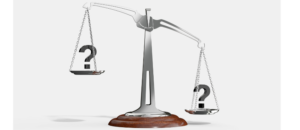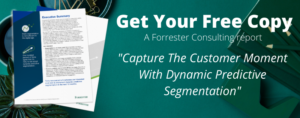Your Segmentation is the Way Your Marketing Org Sees the World…What if Yours is All Wrong?
by Danny Shayman
To even suggest that your entire customer base should be messaged and marketed to as a single entity completely contradicts the best practices that brands have learned over the last century of modern marketing.
Customer segmentation has become the norm because it empowers marketers to understand where customers are in the life cycle, to anticipate their needs, and to deliver personalized, relevant experiences that drive incremental growth.
“[Customer segmentation] helps us understand where we could show more emerging brands. We use it as a selling tool to help us determine where there is still opportunity for us to sell. Segmentation really allows us to be more laser-focused on how we execute and create a holistic strategy that compliments all these pieces.”
— Director of shopper marketing initiatives, CPG company
As consumer behavior continues to evolve in the post-Internet world, today’s segmentation must evolve too in order to keep up with today’s customers. And here’s why it matters: A flawed segmentation program could have a negative, cascading effect on every marketing decision made down the line.
After all, it’s not if you use segmentation that makes the difference, it’s how you use it.
What other practice in marketing has such an impact on the entire organization?

Four segmentation models—which do you use?
Today’s marketers use four main approaches in segmentation:
Persona-based segmentation. This is the simplest approach and doesn’t require advanced analytics. Customers are divided up by basic attributes such as demographics or location. They are base-level at best and may have the potential to guide some messaging, but don’t truly map to business outcomes.
Behavior-based segmentation. This segmentation method creates customer groups based on behavioral, transactional, or other data sources. For example, customers who buy trucks and ones that buy SUVs or ones with or without your store’s loyalty card. They are limited because they are static and generally aren’t updated very often based on new customer signals.
Segmentation based on predictive analytics. Predictive segmentation analyzes and groups customers based on their likelihood to take a specific action. This is a much better approach than persona- or behavior-based segmentation because it scores and groups customers in accordance with the goals of the business.
Dynamic Predictive Segmentation (DPS): DPS is the fourth—and newest—type of segmentation. Like segments based on predictive analytics, audience groupings are dictated by the propensity to take action. However, DPS is superior because segments and their associated characteristics change dynamically in real-time, based on new data from customer interactions. Therefore, this type of segmentation is dynamic in multiple ways because not only do customers’ segment assignments change as their behaviors change, but their propensities also update in real time as well.
The next age of marketing will be data-driven … this point is inarguable. If you’re adjusting your marketing approach to be more data-driven, you are in good company. Forrester found that “forty-two percent of marketers are interested in or plan to implement dynamic predictive segmentation in the next 12 months.”’
Segmentation at the speed of business = processing & using consumer signals
Speed is becoming more and more a priority for marketers. The ability to track customer behavior, get that intel into the systems that need it, and then react accordingly is key to successful marketing.
Consider the landscape today in the light of a global pandemic which has dramatically shifted consumer buying behavior. How could any segmentation done months—or years ago—provide proper navigation to a brand today?
It can’t. Segmentation must be dynamic.
Of course, many marketers still struggle with responding in real time to changing customer behaviors; translating data and analytics into measurable outcomes; and creating content and recommendations relevant to each customer.
But, if you don’t harness these consumer signals, then another brand will. Think of it this way: Dynamic predictive segmentation enables you to adapt to data about your customers and prospects in near real-time. It’s the difference between nimbly navigating through traffic in a high-performance car versus being stuck on a train track without any ability to take new roads.
Do you want your brand to be the car or the train?
Segmentation is a strategic asset you can’t afford to get wrong
Marketing today is all about context. Marketers need to reach the right customer at the right time with the right message. Customer segmentation has become an increasingly crucial tool in the marketers’ quest to provide relevant experiences; extending into planning and product innovation as well.
The way your marketing organization sees the world directly impacts the way it will try to go to market. This is your strategic asset. A company’s segmentation dictates how so many other decisions will be made.
Companies cannot afford to misfire in this area.
Static segmentation just can’t keep up anymore in this fast-paced world. As more and more consumer/brand interaction happens online, the signals available to marketers grow and the potential to use them to drive business outcomes and goals becomes more important. Static customer segmentation may have been sufficient in the past, but today’s complexity requires an advanced solution. This will be particularly true in the “next normal.”
Static segmentation is the past. Dynamic predictive segmentation (DPS) is the future.

